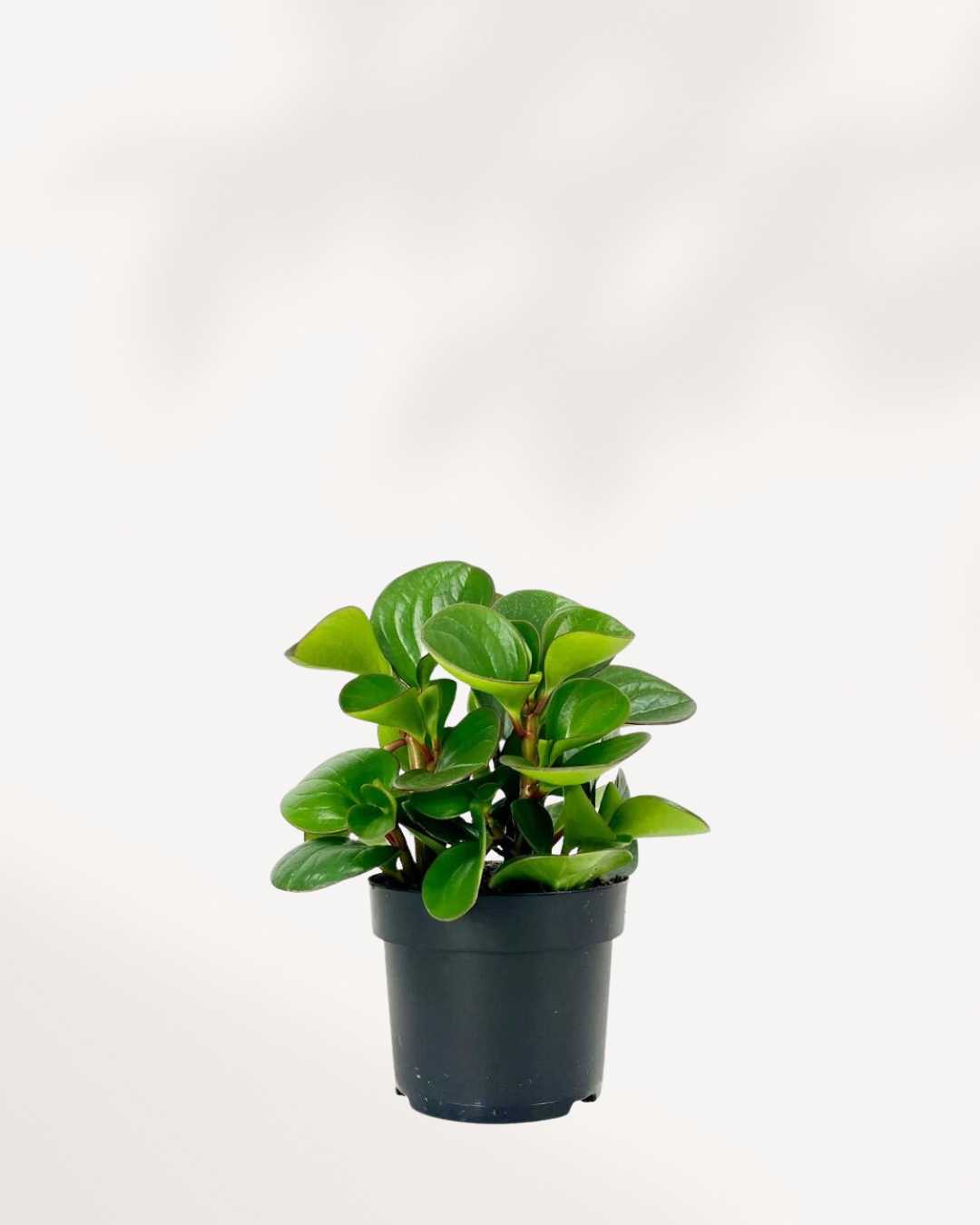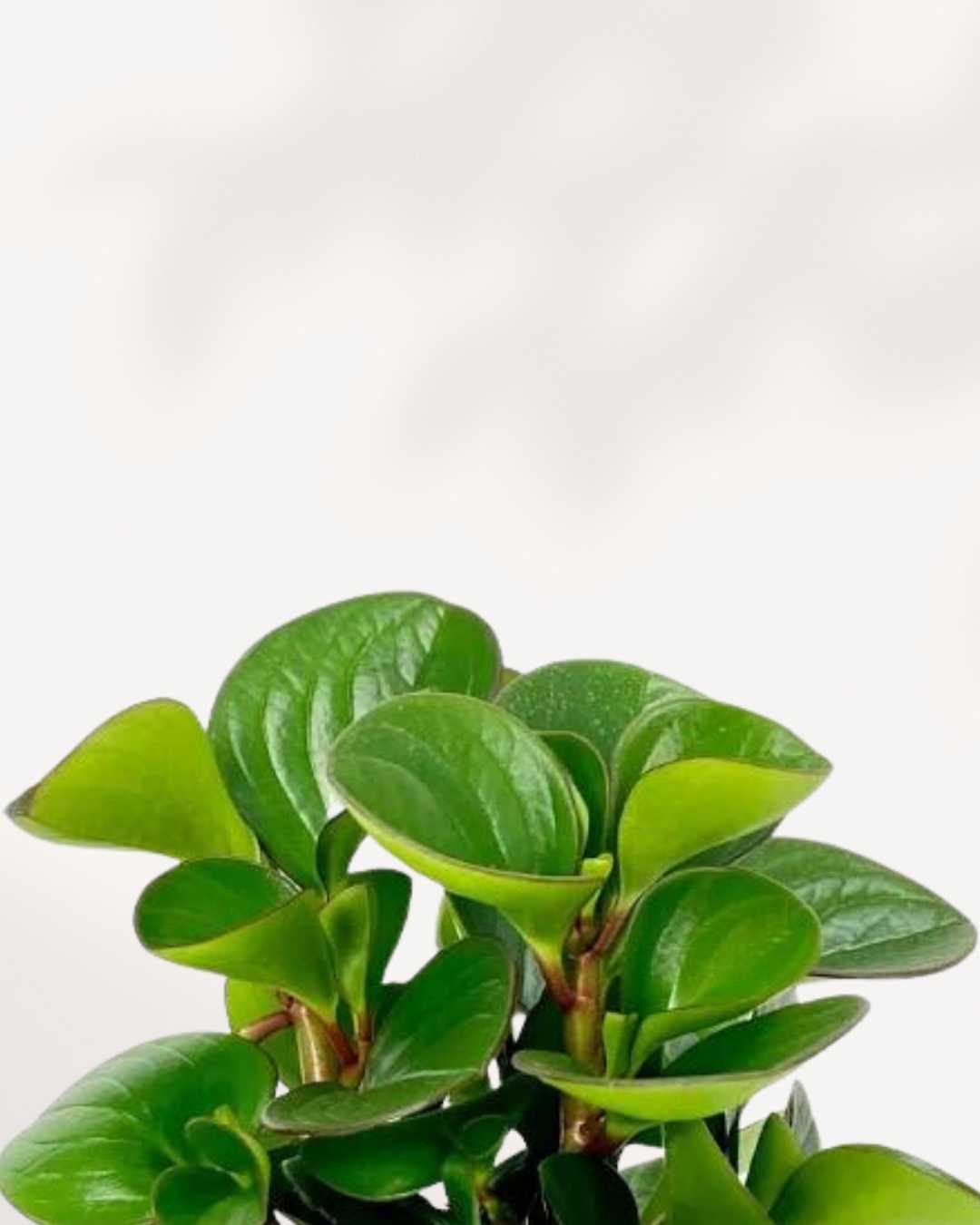Couldn't load pickup availability
Turn Any Corner Into a Mini Jungle with Peperomia Obtusifolia
Peperomia Obtusifolia, often called the Baby Rubber Plant, is a resilient and charming houseplant with thick, glossy green leaves that feel almost succulent. It’s easygoing, compact, and perfect for brightening desks, shelves, or small spaces without asking for too much attention.
Why You'll Love Peperomia Obtusifolia
🌿 Glossy, lush foliage that adds a fresh pop of green
🌸 Low maintenance and thrives with minimal care
💧 Tolerant of occasional missed waterings thanks to its succulent-like leaves
🪴 Compact growth habit, ideal for small spaces or plant groupings
Order Yours TodayCommon Names
- Peperomia Obtusifolia
- Baby Rubber Plant
- American Rubber Plant
- Blunt-Leaf Peperomia
Botanical Classification
- Kingdom: Plantae
- Order: Piperales
- Family: Piperaceae
- Genus: Peperomia
- Species: Peperomia obtusifolia
Native Habitat
Peperomia Obtusifolia originates from the tropical rainforests of Central and South America. It naturally grows in warm, shaded understories and loves bright but indirect light when grown indoors.
Why It’s So Popular
- Effortless to care for, even for first-time plant parents
- Compact and adaptable to a variety of spaces
- Glossy, vibrant leaves that stay attractive year-round
- Pet-friendly option for cat and dog owners
Description
Appearance
The plant’s thick, spoon-shaped leaves grow in a tidy rosette pattern. They range from deep emerald green to variegated cream-and-green forms, depending on the cultivar.
Growth Habit
Peperomia Obtusifolia stays relatively small and bushy, rarely exceeding 12 inches in height. It grows slowly but steadily, making it perfect for tabletops or window ledges.
Popular Peperomia Varieties
Peperomia Ruby Glow
- Distinctive red stems and succulent leaves, perfect for bright spaces.
Peperomia Piccolo Banda
- Compact size with striped, banded leaves for decorative displays.
Peperomia Mendoza
- Soft green foliage with a subtle silver sheen for elegance.
Peperomia Napoli Nights
- Dark, velvety leaves with silvery undertones, adding contrast.
Peperomia Angulata
- Trailing growth habit with bright green leaves, ideal for hanging baskets.
Dealing with Pests
Peperomias are generally pest-resistant, but watch for:
- Mealybugs appearing as white cottony clusters.
- Scale forming brown bumps along stems.
- Spider mites if the air is too dry.
Keep leaves clean and avoid overwatering to prevent fungus gnats.
Frequently Asked Questions
How much light does it need
Bright, indirect light is perfect. It can tolerate low light but grows more slowly.
How should I water it
Allow the top inch of soil to dry before watering. Overwatering is the most common issue.
Does it like humidity
Yes, it appreciates moderate humidity but adapts well to average indoor levels.
Is it safe for pets
Yes. Peperomia Obtusifolia is considered non-toxic to cats and dogs.
What soil works best
A well-draining mix, such as potting soil with perlite or orchid bark, keeps roots happy.
Learn More About Peperomia Care
Want tips on keeping your Peperomia thriving. Visit our Peperomia Plant Care Guide.
Bring Home a Fresh, Easy Companion
Add Peperomia Obtusifolia to your space and enjoy its glossy, cheerful presence every day.
Shop NowHow to take care of Peperomia Obtusifolia
Light: Medium - Bright
Light: Medium - Bright
Sun: Indirect
Sun: Indirect
Water: When mostly dry
Water: When mostly dry
Humidity: Any
Humidity: Any
Pet Friendly: Yes
Pet Friendly: Yes
Pro Tip
Pro Tip
Delivery Policy for Plant Condition
Delivery Policy for Plant Condition
"I have only received part of my order. What to do?
No worries if you've only got part of your order! Our plants come from different nurseries and might arrive in separate shipments, typically 1-2 days apart. It's all part of ensuring your green friends reach you in top-notch condition!
If you do not receive the remaining packages within 48 hours contact support at info@mygreenscape.ca
What is the Life Time Support?
Absolutely! Lifetime support means you can count on us whenever you have questions or uncertainties about your plant. Whether you're puzzled by its behavior or just want to ensure it's thriving, we're here for you. Connect with us on Instagram @mygreenscapeto or shoot us an email at support@mygreenscape.ca.
When it comes to our guarantee for plants shipped with standard or express, rest assured that we offer a 30-day happy healthy plant guarantee on all such shipments. This ensures that your plants are covered for 30 days after delivery, giving you peace of mind regarding their condition. If you have any concerns within this period, feel free to reach out to us for assistance.
For further details, please visit our Local Delivery, Store Pickup, Standard Shipping Guide Page.
What to expect
What to expect
Your plant will arrive in a standard nursery pot, typically 0.5" - 1" smaller than the stated size to seamlessly fit into your chosen decorative pot. Washable Paper Planter Bags are available for separate purchase.
Just like nature intended, each plant is unique, showcasing natural variations in size, shape, and characteristics. Our commitment is to deliver a plant that closely resembles the one featured on our website, matching your chosen size, and with the potential to thrive happily in your home.
Frequently Asked Questions
Frequently Asked Questions
Certainly! If you're pondering about ordering plants online, you're not alone. We've compiled the most frequently asked questions. Check out our FAQ section here for quick answers! Happy planting!
Plant & Pot Size Chart
Plant & Pot Size Chart
Choosing the right pot size for your plants can be a daunting task, especially if you're new to gardening. But fear not! Our pot sizes chart can help you find the perfect match for your plants, ensuring they have enough space to grow and thrive. With our guide, you'll be able to confidently choose the right pot size and plant variety for your gardening needs.
Plant Pot Size Guide.

| Extra Small | 7-10 cm | 2.5 - 3 inches |
| Small | 11-12 cm | 3.5 - 4 inches |
| Medium | 14-17 cm | 5 - 6 inches |
| Large | 19-21 cm | 8 - 10 inches |
| Extra Large | 24-27 cm | 12 - 14 inches |
All sizes are specified in product details.
Your Complete Guide to Pot Sizes: What Size Should You Choose?

When selecting a pot for your plant, it's important to find the right size. But with all the different options out there, how do you know which one is best? We're here to help!
MyGreenscape's pot sizes chart is a great resource for finding your perfect fit. Our easy-to-read chart takes out all the guesswork and helps you quickly choose the right size for your plant.
Smaller pots are best for seedlings or small plants just starting out. These tend to be shallow but wide, allowing enough room for the roots of the young plant but not too much where they get overcrowded. Medium-sized pots are ideal when your plant has grown from its infancy and is ready for more space. These are deeper and wider than small pots, so that it can accommodate larger root systems - making sure your plant gets enough nourishment while still giving it breathing room. Large pots are top choice if you have an established plant in need of lots of space - think trees and large shrubs! The spacious depth and width allow plenty of room for deep root systems without struggling for air or light.
No matter what size you choose, MyGreenscape has got you covered, with our pot sizes chart guaranteeing you find the perfect fit every time!
Winter Shipping Protection
Winter Shipping Protection
We take extra care with each package during the colder months. For destinations experiencing cold weather, we provide insulated packaging and heat packs as needed to protect your plants from freezing temperatures. With Winter Shipping Protection, your plants are equipped to arrive safe and sound, even in winter’s chill.
Care Guide
Care Guide
Explore essential care tips. check out our Comprehensive Resource for Indoor Plant Care.


WATERING MADE EASY
Check soil moisture before watering and use a potting mix that drains well. It’s the secret to healthy, happy plants!
Hear From Happy Plant Parents.
Who have brought Mygreenscape plants into their homes.














